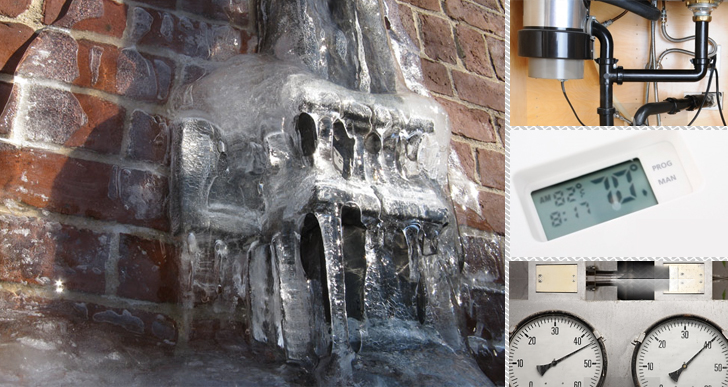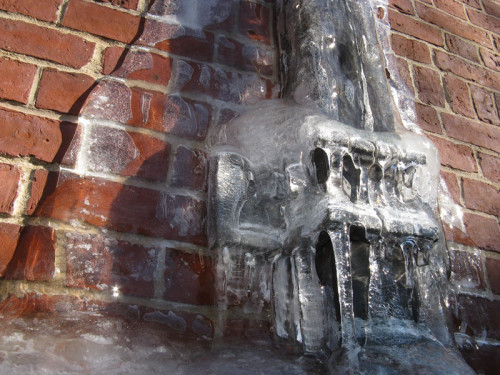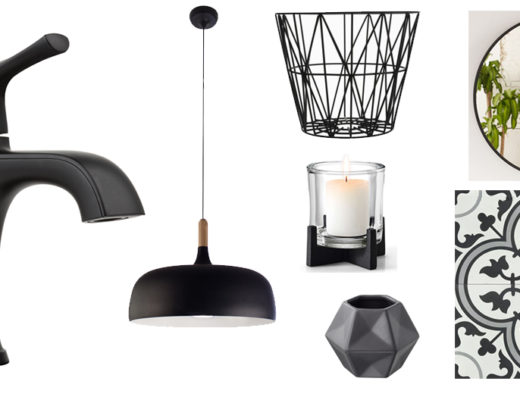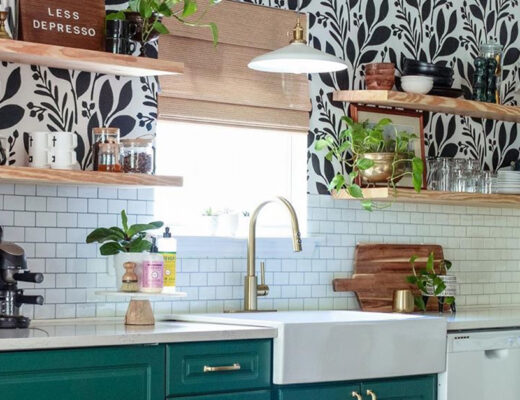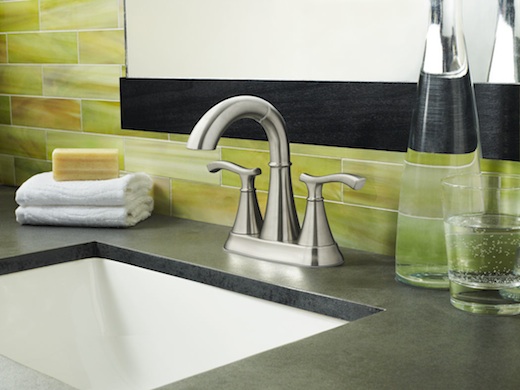This is a guest post from ImproveNet’s Jacob Hurwith.
The weather has not been too kind this winter and as a result, many are dealing with high power bills. While they can fluctuate no matter what the conditions outside or precautions you take, a hefty bill all homeowners can avoid is repairing frozen pipes.
Frozen Pipes from MovingInsider
Freezing temperatures cause water to expand. When water in a pipe expands, the pipes frequently burst. While there can be several causes of pipe issues, here are the three easiest precautions all homeowners should take to avoid frozen pipes, and a large repair bill!
Do Open Cabinet Doors
It is not the most effective tactic, but the quickest and easiest way to avoid frozen pipes is to open cabinet doors where water pipes exist. This can be extremely valuable in the kitchen and bathroom, as these are the most frequented rooms in the home.
By keeping these cabinets open all day, you’re letting the warm air from your heating system hit the pipes. Opening all cabinet doors is highly recommended, especially when you leave home for the day. If that’s too much of a hassle, be sure to at least take care of the cabinets below the kitchen and bathroom sinks.
Don’t Stop the Drip
A great way to avoid frozen pipes is by releasing cold water. This is the most common tactic used. You should let cold water drip from your faucet when the sink is not in use. Even a trickle of water can prevent pipes from freezing.
If you’re going on vacation and are a DIY veteran, drain the entire system or open the faucet completely to ensure no pipes will burst. If you’re leaving for a lengthy vacation, be sure to contact an HVAC contractor in your area.
Don’t Change the Thermostat
This certainly won’t help to lower your gas bill, but a great way to avoid frozen pipes is keeping the thermostat set at the same temperature, both during the day and at night.
Having extra heat on hitting the pipes throughout the day, since you’re leaving your cabinets open, of course, will greatly reduce your risk of frozen pipes. You may see an increase in your gas bill, but the heating bill will still be far less than a repair bill!
Do Consider Location
If you’re building a new home, keep the furnace location in mind. Many furnaces are not designed for below zero temperatures. Consider a location beyond the cold, damp basement. If you think your furnace needs an update, find out how much it costs to repair a furnace.
Of course, proactive, preventative maintenance is better than reactive repairs. If you have other home precautions you take during the winter, let us know in the comments section below.
